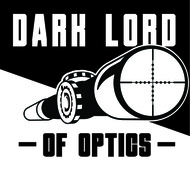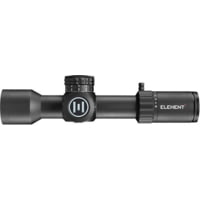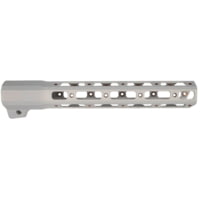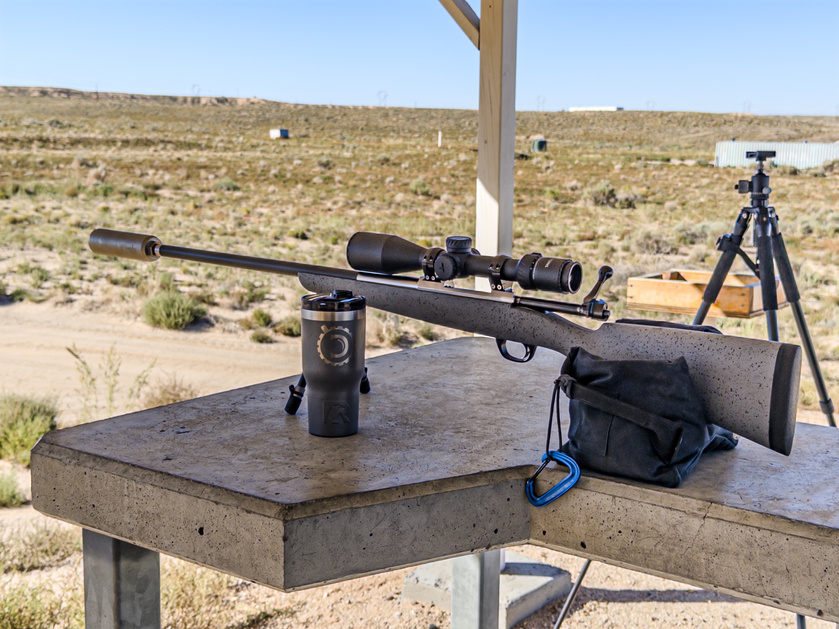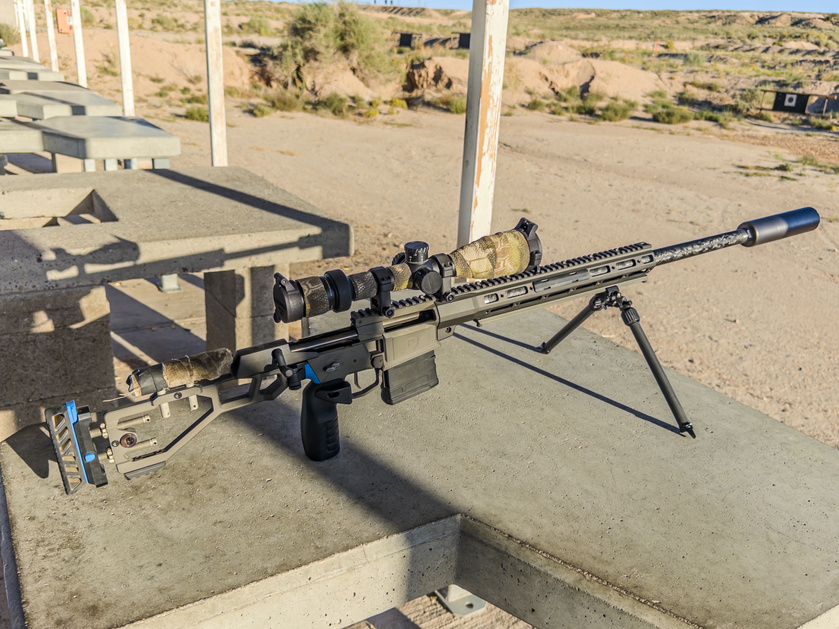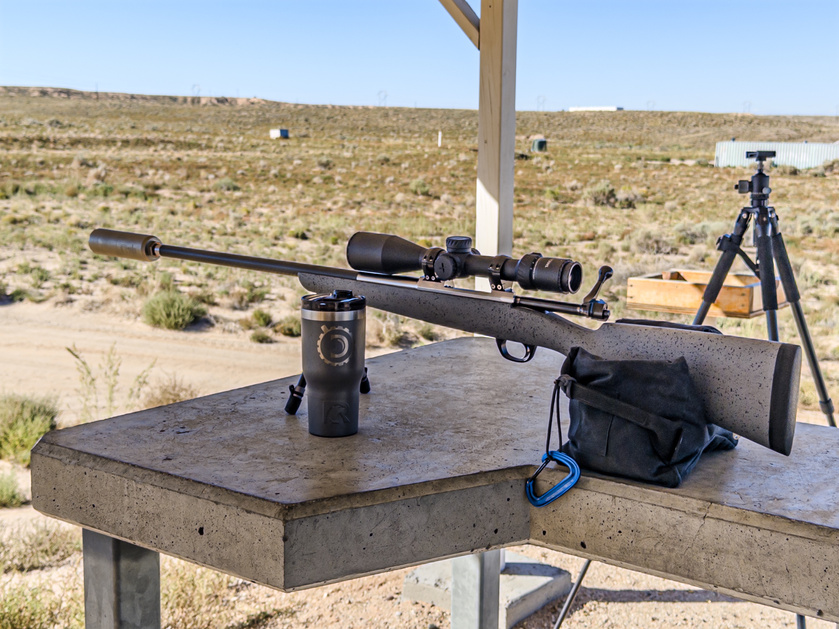Fall is upon us. That means hunting season. That means I am setting up the rifles I will be using for the hunts I have planned for this season. That means it is another good opportunity to think through the scope selection and to consider what would be an ideal option.
The moment anything starts with the word "ideal", you immediately know it does not exist. You also immediately know that there is going to be a lot of personal opinion in there. There is really one thing we know for sure about opinions: they are kinda like assholes, in a sense that we all have them and they all stink.
Now, that having been said, I still think it merits discussion. What I would like to do here is try to lay out the boundary conditions, so to speak, for a general purpose riflescope that would work well for everything. It might not be absolutely perfect, but it would work well.
There is, of course, a big difference between well and well enough. I am looking for "well", in this case. "Well enough" is, quite frankly, not enough.
Also, this is one of those things where I am looking for input. I have not hunted in Africa (maybe some day) or in Europe. I suspect there are a lot of similarities in terms of hunting between North America and other places, but I am not even that experienced of a hunter in North America. I will still pontificate on the subject a little bit.
Let's start off by thinking through some of the specific requirements for different types of hunting, in no particular order. Naturally, this all assumes that the core fundamentals are there, i.e. the scope holds zero.
- For the normald general purpose big game hunting in North America, you really do not need all that much. Some mid-range magnification with 40-50mm objective is perfectly sufficient for legal hunting hours. You do not want the scope to be too heavy. You want decent low light performance. You want the reticle to be visible across the whole range of hunting conditions. Traditionally, a good example of something like this is a SFP 3-9x42 or 2-10x42 scope like the Leupold VX-5HD That having been said, that niches seems to have been occupied evern more prominently by modern 3-15x42 or similar scopes like the Vortex Razor HD-LHT
- For the wooded areas, low magnification and wide FOV are important. You might end up shooting at very close distances and doing so quickly. Here, again, being able to pick up the reticle quickly against dark backgrounds is really important. Looking into the shadows in heavily overgrown areas will demand a lot from the optical system. Traditionally, this was a 2-7x35 or similar sized scope. Old Kahles KXi was a really good example of that, but it has not been made for a long time. I ahve a couple of Vortex Razor HD-LH 1.5-8x32 scopes, but they are also discontinued. The classic 1.5-6x42 was always the low light option for this kind of stuff, but those are almost gone as well replaced by higher erector ration designs. Delta Titanium HD 1.5-9x45 is a good option. GPO makes 1.5-9x32 and 1.5-9x44. Meopta has a really excellent 1.7-10x42 Meostar R2.
- Western hunting (kinda like where I live) gets the distances and environmental conditions up into much more uncomfortable territory very quickly. Everything mentioned above about low light performance and weight still applies, but now you have to have the means of trajectory and wind compensation either via the reticle or the turrets (or both). A little more magnification can be helpful here. Some of these situation border on long distance hunting since the mountaneous terrain can dictate a fairly long shot sometimes. For me, 15x on the top end is plenty, but I do ahve to admit that the rifle I primarily use for this application wears Vortex Razor HD-LHT 4.5-22x50 on it. This can be acomplished via either SFP or FFP designs by a competent shooter, but I am firmly in the FFP camp whenever we need to worry about distance and wind. Larger scopes weigh more which really makes the Razor linked above stand out. It keeps the weight very reasonable.
- Night hunting in the US means pigs, but internationally the restrictions are different. There are a couple of approaches to night hunting: conventional riflescope with a large objective (like Meopta Meostar R1 3-12x50), dedicated thermal riflescope, thermal or night vision clip-on combined with a conventional riflescope. For hunting purposes, I lean toward thermal clip-ons. I've been talking about these a lot lately and the choice really depends on how much money you want to spend. It really start at around $3k with Accufire Incendis and Burris BTC-50 Burris gives you a little more distance, but Accufire has the advantage of flexibility and longer battery life. You can use it as either a clip-on or dedicated thermal scope.
- Hunting large and dangerous animals. In North America, it essentially means large bears. For this, we are looking for something that gives us speed, i.e. good FOV and very visible reticle. Often times, LPVO do this well, but they are not ideal in low light. Still, for typical distances this is done that, a smaller objective is not a major problem. Something that bottoms out at 1.5x with a a fast to acuire reticle should be good enough though. An LPVO like Delta Stryker 1-6x24 is a good option. A high quality 1.5-6x42 would be good if I could find one. Previously mentioned 1.5x-to-something scopes might do the trick.
Can all of the above be covered with a single scope? Definitely not with any scope that currently exists. If March were to make a FFP version of the 1.5-15x42 with a bright enough reticle illumination it would be the closest I can think of.
If we take out the "large and dangerous game" category, we can get pretty close with some modern designs. It won't be cheap though. The closest to "do almost everything well" scopes is probably Tangent Theta TT315H 3-15x50. 15x on the top end is enough for most stuff. 3x on the low end is a little more than I like for use with clip-ons, but with TT's wide FOV, it is manageable. The reticle is very nicely visible acros the magnification range. For distance, you will most likely be dialing since it is not a tree reticle, but that's not an unreasonable compromise. It is quite exceptional in low light all on its own and even better with a clip-on.
The downside is that this scope is a little longer than I would ideally want for clip-on use and a little heavier at 13.5" and 27 ounces. That is quite svelte by the standards of most FFP scopes out there, so I won't complain too much.
Tract's Toric 2.5-15x44 also gets close to my requierments and without the Tangent price tag, but it really needs reticle illumination on 2.5x.
I have the M version of the Tangent scope with Gen 2 XR reticle and after some consideration I decided to put that on my Fix in 8.6 Blackout. I will likely be hunting with my two Fix rifles this season (and with a bow). The 308 has a Vortex Razor HD-LHT 4.5-22x50 and the 8.6 has the TT315M 3-15x50. At the moment I have a mule deer hunt, elk hunt, hog hunt and whitetail archery hunt planned for the remainder of the year, so we will see how it goes.
